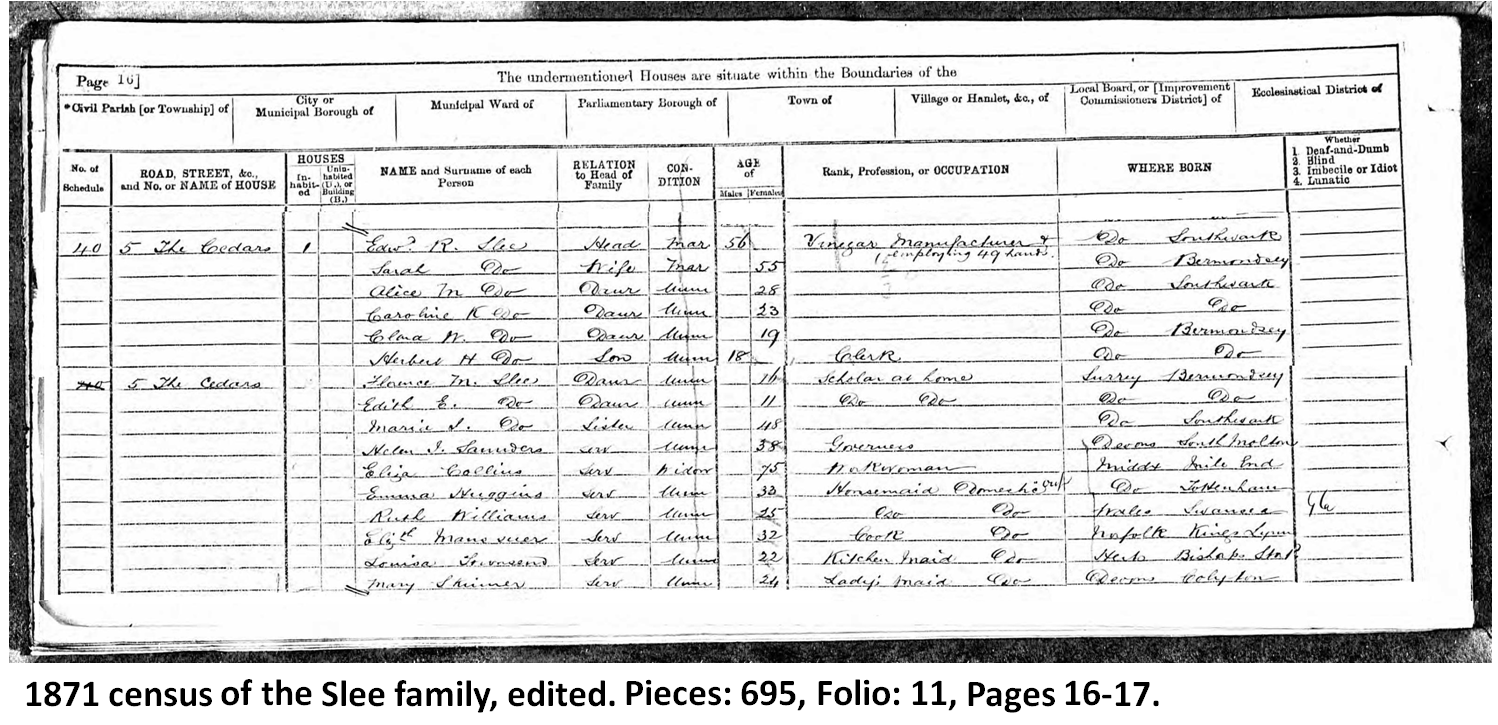
A selection of watercolour artworks painted ca. 1869-1873 by women of the Slee family offers a glimpse into the changing lifestyle of Victorian women in nineteenth-century England. The paintings are part of the Terry Forin collection, which has research about families in Canada and the United States.
The female subjects in the paintings are shown engaging in popular upper class activities such as horse riding, swimming, and croquet. Their colourful clothing reflects the technological advancements of the age as well as emerging fashion trends.
The clothing in the paintings will be closely examined to view the relationship between fashion and societal control, possibly revealing the artists’ objections to the purely domestic expectations for Victorian upper class women.
The Slee family
Edward Richardson Slee (1815-1878) was a wealthy Vinegar Manufacturer of Slee & Co. (later Slee, Slee and Co). Slee & Co. was founded in 1812 by Edward’s uncle, Noah Slee (1787-1850) and later co-managed by Edward’s father, Josias Slee (1773-1829). Edward joined the company in the 1840s and by 1844, it was the fifth largest vinegar brewer in England. Vinegar was a valued preservative, used for pickling vegetables, and occasionally fruit and meat. As wealthy business owners, the Slee family was Lower Upper class, situated just below the Middle Upper class reserved for officers and lords, and the Royal class.

In 1839, Edward married his first cousin Sarah Slee (1816-1893), the daughter of Noah Slee and Sarah Button. They lived in Surrey, England and together they had nine children: seven daughters (one still-born) and two sons. In a census record from 1871, Edward and Sarah are reported to be living with their daughters Alice, Caroline, Clara, Florence, and Edith, and their son, Herbert. At this time, an older daughter, Emily, was married, while Robert attended school. There were also seven employees reported in the household: a Governess named Helen Jemima Saunders, a work woman named Eliza Collins , two housemaids named Emma Huggins and Ruth Williams, a cook named Elizabeth Massuer, a kitchen maid named Louisa Townsend and a lady’s maid named Mary Skinner.
By 1911, Caroline, Florence, and Edith were unmarried and living together. In the nineteenth century, marriage symbolized respectability, while motherhood was the ultimate example of “womanly virtue.” The remaining three Slee daughters’ single lifestyles would be considered “abnormal” for the time period.
Separate Spheres
In the mid-nineteenth century, the women of the Slee family would have grown up during a time when the social roles of men and women became more sharply defined. The concept of “Separate Spheres” emerged as a response to the “natural” characteristics inherent in men and women. Men were to occupy the public sphere of business and politics. Women were expected to occupy the private sphere of the home and perform domestic duties of child rearing, homemaking, and entertaining. These responsibilities provided a “moral duty” for women to act and dress according to their social function.
These strict expectations were less applicable for working class women who had to operate outside of the home to provide for themselves and their families. Employees of the Slee family would be doing chores dictated by the Slee women, likely the matriarch Sarah, to keep the household running smoothly. This meant the women of the Slee family could follow their interests, while housemaids such as Emma and Ruth diligently worked.



